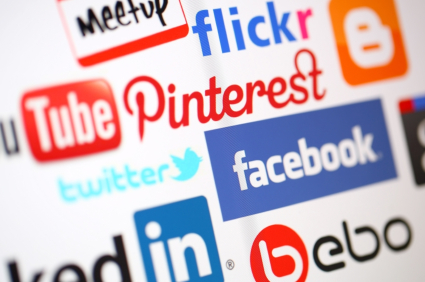 Do they like you, do they really like you?
Do they like you, do they really like you?
That depends. Do ‘they’ even know who you are, what you do and why you do it better?
When you think of Starbucks . . . quick, what do you think of?
Coffee.
When you think of Dunkin Donuts? Donuts.
But when your clients think of you, what do they think of? And this is where branding comes in.
JenningsWire, the online magazine that’s dedicated to the success of all, brings together branding stories that worked in real life. Here we go!
Let’s Make A Deal: If you like me, will you tell your Facebook friends about me?
The following branding story contributed by Brand Strategy Expert, Jenn Morgan, International Brand Coach and Speaker at JennMorgan.com
Branding story: Feed the flames. Last year was my first year offering consulting to entrepreneurs and I did not have a large following. I offered a couple 60 minute strategy sessions to a couple of people I found in private FB groups. At the beginning of the call I asked, “If you receive value from this call, will you tell your FB friends about me?” For 3 weeks straight my name was all over the internet with testimonials about how amazing it is to talk to Jenn Morgan and here’s a link to her website. I was averaging 5-10 applications a day from my website. I signed clients and learned a lot about the market at the same time.
Jenn Morgan is a Brand Strategist at JennMorgan.com.
Get a hashtag
The following branding story contributed PR Strategist, Cyndy Hoenig at PURE PR
Branding story: I am a Publicist/PR Strategist and I used Twitter to brand myself. A few years ago, I decided to offer PR tips. I just started tweeting them about 5 times a day. I used the hashtag #PRTips and have become known for it. It has brought me about 15,000 followers and 4500 Facebook friends so far. I still do it and it is the best thing I’ve done yet to brand myself. After about a year, I downloaded all my tweets and put them all in a E-Book called “600 PR, Marketing & Social Media Tips to grow your business (in 140 characters or less). I offer it for free on my website and get lots of hits and downloads every day. So far, it’s been downloaded over 50,000 times.
Cyndy Hendrick Hoenig is the Senior Partner of PURE PR, a PR company in Oklahoma City.
Does giving away free stuff work?
The following branding story contributed by Minling Chaung, author of
Branding story: The #1 branding strategy I’ve used is to offer something for free to people if they sign up. In the last month I’ve increased my email list by 140%. Continuously offering something of value to people is the best way to build your brand and loyalty. This is because this builds trust. They believe in you and your brand. Most companies try to sell things. But instead, they must offer value first.
Minling Chuang is Founder & Chief JOY coach at TheJoyDepot.com and the author .
The following branding story contributed by Founder and CEO, Tony Ellison of ShopLet.com
Branding story: Our number one branding strategy is articulating our unique value proposition consistently across all channels. The same message of how our service was beneficial and different from competitors was included everywhere from greetings to order confirmation emails. We always reminded our customers that what we offered was value and simplicity.
Tony Ellison is the Founder and CEO of online office supply retailers, ShopLet.com and ShopLetPromos.com. Please visit Tony Ellison on Facebook, Twitter and Google+
Getting your customers to believe your brand is what you say it is
The following branding story contributed by Steve Mehr, CEO of WebShark360.com
Branding story: As a marketing expert, people frequently ask me how to brand their business and their goods for sale in order to stand out from the crowd. When it comes down to a brand, the most important thing to decide is your brand’s position in the marketplace. How do you define yourself differently than everyone else competing for the exact same market share? And how do you translate that definition into a winning business strategy?
The key to translating this brand is to utilize marketing tools that support your brand the best. Frequently, when there are little marketing dollars to spend and you need to have a large impact, public relations is the smartest technique. Using the power of public relations, for very little cost, you can create a buzz around your brand that encourages sales. This is because consumers are savvy these days and are becoming attuned to tuning out advertisements and outbound marketing, also deemed ‘interruptive marketing’.
Why it works: Instead, consumers tend to favor and trust articles endorsing a product over the splashy articles on the next page of a magazine. In order to gain those coveted endorsements, public relations professionals spend a lot of time crafting their pitch and an accompanying press release to inform journalists for their news articles and stories.
Steve Mehr is CEO of WebShark360.com, a marketing solutions and web-based ad agency.
Focus on providing information so new clients come to you for advice
The following branding story contributed by Small Business Consultant, LaKesha Womack of
Branding story: As an author and small business consultant, I have built my brand by creating content around the topics that I consider myself an expert in. I noticed some experts charging people for their content or requiring readers to join a list to receive access to their information. I heard from many clients that this was a turn off, so I focused on creating content through my blog sites, blog talk radio shows and social media sites that can be easily accessed by my network. I have found that marketers are willing to pay to post information on my sites, my blog talk radio show generates listens during my off season and my network continues to grow with a variety of people, not just people who I know. Most of my consulting clients are attained through word of mouth and referrals rather than advertising. I rarely promote what I do and instead focus on providing information that inclines people to come to me for relationship advice or when they want to open or grow their business.
Business Consultant, LaKesha Womack is the author of Building a Brand without Spending a Bundle, Success Secrets for the Young & Fabulous and Is She The ONE? You may visit LaKesha on Twitter, Facebook, LinkedIn
Don’t just write one book, write two books
The following branding story contributed by author and Management Consultant, Michael Provitera, PhD.
Branding story: Self published a book and once it was published, repackaged it for a traditional publisher by differentiating it from the first book.
This is why it worked: Self publishing has not been given the necessary credit that it deserves today. Although there are some success stories, many independent publishers are finding their books on Amazon alone and separate from their traditionally published competitors. By repackaging the book, not only is the second book viewed as professional and accepted by professionals in the publishing field but also the first book becomes a highlighted product. The reason for this is that by providing a second book published professionally, people see a stepping stone of success. Both books are used now as business cards to management consulting and speaking opportunities.
Dr. Michael Provitera is an Organizational Behavior and Motivational Expert, as well as author of Mastering Self-Motivation: Preparing Yourself for Personal Excellence and Mastering Self-Motivation: Bringing Together the Popular and Academic Literature. Please visit Michael at DocProv.com, on Twitter .
Have a mission to educate and inspire others
The following branding story contributed by Elle Kaplan, CEO and Founding Partner of Lexion Capital Management.
Branding story: Our most effective branding strategy has been to position ourselves as an advocate in the space, working towards our mission of empowering people to take control of their financial lives. In a highly polluted industry, our transparent, ethical, and client-centric standard resonates significantly with clients, the press, and the public, and we leverage this as a platform to help educate and inspire. Our brand focuses on positive, informational content that aims to break down business and finance concepts in relatable, accessible terms.
Elle Kaplan is the CEO & Founding Partner of Lexion Capital Management LLC. Please visit Elle at LexionCapital.com
How do you get people to associate you with your branding colors and logo?
The following branding story contributed by Licensed Real Estate Agent in Philadelphia, Tyler J. Morrison of TylerJMorrison.com and Philly-Sales.com.
Branding story: Creating a brand is probably one of the hardest tasks in business. In fact, I struggled with mine over the past few years. After realizing how important brand awareness is, I finally sat down and started brainstorming. On a piece of loose leaf, I wrote down words that reinforced my business plan along with how I wanted to be portrayed by my target consumer, which in my case was modern, sophisticated and hip.
I then approached a few different designers, three to be exact, and came up with twenty or so logo designs that portrayed modern, sophisticated and hip. After researching the meanings of different colors and fonts, I took those twenty designs and pieced them together for what is now my current logo.
Orange represents enthusiasm and creativity, all of which are very important in real estate. There are also “modern” fonts, which I was unaware of. Once my logo was complete, I knew I could then build a brand because my logo was strong enough to sell who I am. This is why I highly recommend starting out with the loose leaf.
I plastered my logo on everything I handed out – business cards, letterhead, postcards and other marketing material. Having a heavy influence online, I also uploaded my logo to every website I am associated with.
I had one branding issue – people did not know what my profession was because I did not to include it as a tagline. To address this, I created a personal website, tylerjmorrison.com, which explained who I am and what I do. To push my brand and create brand awareness, I drove people to my website. Personally, I like the mystery of my industry; it forces people to Google me.
I am constantly told that I am remembered by my logo and it’s modern look, which as I stated earlier, was the look I was after. In many cases, my logo and branding has sold my services even before I speak to the targeted consumer – priceless.
Tyler J. Morrison is a Licensed Real Estate Agent in Philadelphia. Please visit Tyler at TylerJMorrison.com.
Novelist ties her books into a bigger socially relevant conversation
The following branding story contributed by ‘the anti-bully novelist’, Elaine Wolf, of AuthorElaineWolf.com.
Branding story: My #1 branding strategy was putting myself out there as ‘the anti-bullying novelist’. When I was building my website, the site designer asked how I was going to brand myself as someone different from other new authors. That question played in my mind as I went to sleep that night, and the answer came to me at 3:00 in the morning: As both of my novels feature strong antagonists who practice bullying as if it were a sport, I would brand myself as ‘the anti-bullying novelist’, and my slogan would be ‘fighting bullying one novel at a time’. The web designer incorporated both phrases into my website, and I was launched as ‘the anti-bullying novelist’.
Because bullying is now part of our national dialogue, branding myself as ‘the anti-bullying novelist’ enabled me to attract media attention, which put me on the radar screen of organizations, libraries, schools, and book clubs. Numerous groups (from teen councils to assisted living facilities) invited me to speak at their functions. I was the keynote speaker at a conference for 100 public school teachers, as well as at a luncheon sponsored by a large women’s group. I even addressed a 2nd generation Holocaust survivors’ group and spoke at a known Holocaust Center. My novels have become springboards to discussions about bullying and tolerance.
Why it worked: My branding strategy worked because it linked my books to a current hot topic – even though one of my novels, CAMP, takes place in the early 1960s, and the other, Danny’s Mom, is set in 2000. And branding myself as ‘the anti-bullying novelist’ led me to my true mission of keeping the anti-bullying conversation going so that, in concert with professionals in our communities, we will make our camps and schools kinder, gentler places for everyone.
Elaine Wolf, ‘the anti-bullying novelist’, is author of Danny’s Mom and CAMP. Please visit Elaine at AuthorElaineWolf.com and on
Facebook and Twitter
Note from Annie, Creator of JenningsWire: Actually, this is a personal favorite branding strategy that our Radio Director, Stacy, always likes to say, “anyone who becomes an overnight success was never asleep”. Branding takes time and so does success but the secret is to just keep going.





